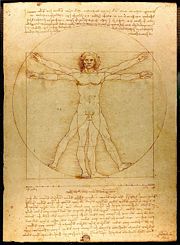“Truly marvellous and celestial was Leonardo,” proclaimed Giorgio Vasari, his first biographer; “and in learning and in the rudiments of letters he would have made great proficience, if he had not been so variable and unstable, for he set himself to learn many things, and then after having begun them, abandoned them.”
Vasari’s thumbnail portrait of the quintessential Renaissance man, in his Lives of the Artists, conveys better than any other document the mixture of wonderment and exasperation that Leonardo da Vinci was capable of inspiring in his contemporaries. On the one hand, Vasari sings the praises of Leonardo’s incomparable intellect, which enabled him to move, apparently effortlessly, from one abstruse problem to another:
“he was the first, though but a youth, who suggested the plan of reducing the river Arno to a navigable canal … he was continually making models and designs to show men how to remove mountains with ease, and how to bore them in order to pass from one level to another; and by means of levers, windlasses, and screws, he showed the way to raise and draw great weights, together with methods for emptying harbours, and pumps for removing water from low places, things which his brain never ceased from devising; and of these ideas and labours many drawings may be seen, scattered abroad among our craftsmen…”
But Vasari also bemoaned Leonardo’s incurable dilatoriness, explaining it as a by-product of his perfectionism: “Leonardo, through his comprehension of art, began many things and never finished one of them … since he conceived in idea difficulties so subtle that they could never be expressed by the hands, be they so ever so excellent.” The late-eighteenth century artist and writer Henry Fuseli expressed such reservations less charitably, damning Leonardo as “an intellectual libertine who wasted...

Leonardo da Vinci: Experiment and Design at the V & A
17-09-2006

